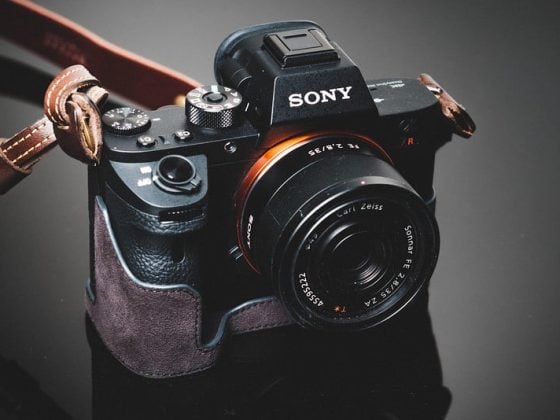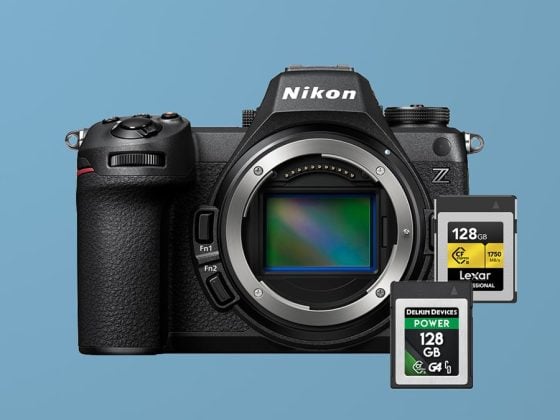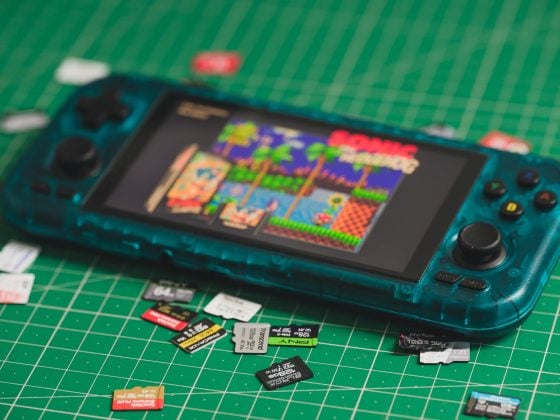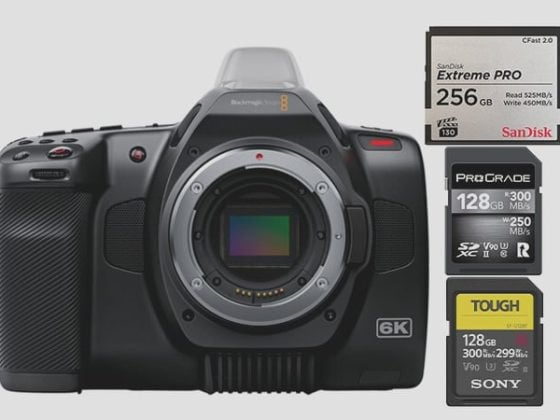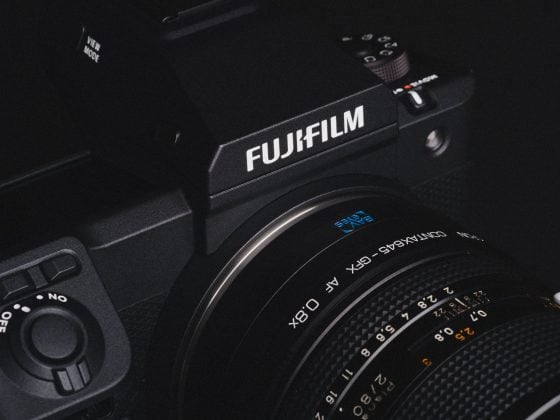In-Camera speed comparison between all the most popular UHS-I and UHS-II SD memory cards in the Sony A7rII.
What I’ve learned? Speed doesn’t matter as much as the little letters and numbers written on the card.
The new Sony cameras are loaded with so many features and many of them require certain kinds of cards to get the camera to do what you need. This guide will show you the basics and list some recommended SD cards that I’ve tested and that work great.
| Recommended SD Cards | Speed Class | USB Write | USB Read | Links | |
|---|---|---|---|---|---|
| SD UHS-II V60 | UHS-II | Hide | Hide | ||
| Sony E v60 256GB | UHS-II | https://geni.us/ARfXs | Amazon / B&H | ||
| UHS-I U3 | UHS-I | Hide | Hide | ||
| Sandisk Extreme Pro 32/64/128GB | UHS-I | 144 | 172 | https://geni.us/AjId | Amazon / B&H |
| Kingston CanvasGo! 128/256/512GB | UHS-I | 124 | 161 | https://geni.us/oJU7q | B&H |
| Sony 95 | UHS-I | 81 | 90 | https://geni.us/wnX8rG | Amazon |
| Delkin Advantage 32-1TB | UHS-I | 77 | 93 | https://geni.us/HlTWWVh | Amazon / B&H |
Camera Stats
| Sensor: 42.4MP Full-Frame Exmor R BSI CMOS Sensor Processor: BIONZ X Image Processor Memory Card Interface: UHS-I Video Resolution: 4K at 30fps 100M with S-Log Gamma Continuous Shoot: 5fps Buffer Size: 900MB Shots to fill buffer (Uncompressed RAW): 23 Time taken to clear buffer: 23 seconds (Sandisk Extreme Pro) |
Sony A7r II Memory Card Speed Tests
New firmware 3.20 now allows us to use SDHC memory cards with the XAVC S codec. I’ve tested and confirmed that this does work, although the camera still has issues with compatible cards registering as not being compatible, making buying memory cards for 4k 100M still a crapshoot – more on this later.
SD Memory Card Speed Test Chart
Shot with ISO 640, continuous high, 1/100sec f2.8.
| SD Memory Cards | USB 3.0 Read | USB 3.0 Write | 4K Video 100M | Sony A7r II Write |
| UHS-II SDHC | ||||
| Lexar 32GB 2000x UHS-II | 280.9 MB/s | 181.4 MB/s | No | 35.27 MB/s |
| Delkin 32GB UHS-II | 245.1 MB/s | 164.6 MB/s | No | 35.05 MB/s |
| Sandisk Extreme Pro 32GB UHS-II | 257.3 MB/s | 109.9 MB/s | Yes | 34.28 MB/s |
| Lexar 32GB 1000x UHS-II | 145.0 MB/s | 60.7 MB/s | Yes | 34.28 MB/s |
| UHS-I SDXC | ||||
| Sandisk Extreme Pro 64GB U3 | 89.0 MB/s | 84.7 MB/s | Yes | 34.76 MB/s |
| Sandisk Extreme 64GB U3 | 71.3 MB/s | 52.1 MB/s | Yes | 34.47 MB/s |
| Sandisk Extreme Plus 64GB U3 | 88.9 MB/s | 62.0 MB/s | Yes | 34.46 MB/s |
| Kingston 64GB Class U3 | 88.1 MB/s | 74.3 MB/s | Yes | 33.76 MB/s |
| Samsung Pro 64GB Class U1 | 86.8 MB/s | 77.2 MB/s | No | 33.72 MB/s |
| PNY 64GB U1 | 86.1 MB/s | 54.5 MB/s | No | 33.61 MB/s |
| PNY 64GB U3 | 87.9 MB/s | 61.6 MB/s | Sometimes | 33.59 MB/s |
| Lexar 600x 64GB U1 | 85.6 MB/s | 60.1 MB/s | No | 33.30 MB/s |
| Sony 64GB U3 | 87.2 MB/s | 71.9 MB/s | Yes | 32.84 MB/s |
| Transcend 64GB U3 | 87.7 MB/s | 64.1 MB/s | Yes | 31.95 MB/s |
| Samsung 64GB EVO U1 | 43.9 MB/s | 22.7 MB/s | No | 21.87 MB/s |
Speed Chart Overview
Some UHS-II cards do perform quicker in the camera, but only marginally. But this is because the camera does not have a UHS-II bus.
I’m really disappointed at how slow Sony still is at memory card write speeds. Other mirrorless cameras like the Fujifilm XT1 are almost three times faster and the Canon 5Ds r is significantly faster than that with its CF cards. Sony is WAY behind the competition on this one.
Why So Slow?
I’ve been trying to figure this out for over a year now. Like always, some guys in the comments came forward with some interesting ideas that I’ve tested and can confirm are valid.
All these Sony cameras to date only use the UDMA 4 interface. When I test SD cards on a USB 2.0 slot on a Mac, I get read and write speeds that cap out at around 30MB/s.
Comment from AlphaDog –
“This is an absolute minefield of conflicting/overlapping terminology mixed with unpublished specs and hard to directly measure values. My understanding is that ‘U3’ is a guaranteed minimum write speed of 30MB/s. This can be supported on both UHS-i and UHS-ii cards. in fact UHS-I cards support several different interface protocols (SRS50/DDR50, which both support up to 50MB/sec; and SDR104 at 104MB/sec). U3 the uses some specific API calls over this transport to tell the card that it really really needs this minimum 30MB speed (eg for 4K vid). So the Sony could (and almost certainly does) use the UHS-I interface (not UHs-ii), and probably only uses one of the 50MB/sec max protocols (not the 104MB one).”
So while Sony is kicking ass innovating so many new features and technologies. They’ve left out one of the most basic, simplest features in their camera, one that really hurts the write speed performance. USB3.0.
Recommended SD Memory Cards For The Sony A7rII
Based on the tests the Sandisk Extreme Pro is the way to go for UHS-I cards. But if you’re concerned about price the PNY and Sony are fantastic cards.
It might be best to order from Amazon just because they have the easiest-to-use return system.
UHS-I
Sandisk Extreme Pro 64GB SDXC U3 UHS-I – Amazon
Lexar 633x 64GB SDXC U3 UHS-I – Amazon Hasn’t done the speed test in this camera yet, but this card has been working great in other Sony cameras.
Sony 64GB SDXC U3 UHS-I – Amazon
I had to remove the PNY 64GB U3 card because I keep getting emails from people having problems with it. I can no longer recommend it.
UHS-II is it worth it to you?
It might be, if USB 3.0 transfer speeds are important to you, then try UHS-II since in the camera they perform about the same. Unfortunately, I only have SDHC UHS-II cards, so I’m not entirely sure how the camera clocks them down. If they clock down to U1 how it will change the video?
SD Memory Cards Not To Buy
If you’re looking at the list and thinking you want to buy your favorite brand hoping it will work fine. You’re taking a risk. Here is a list of cards I’ve had people personally email/comment about not working with 4k 100M. Now the crazy thing is, all these cards work perfectly fine for my camera at 4k 100M. Except for the Samsung, I have them on order. I’m now wondering if it’s an issue with the camera or an issue with the cards.
PNY 64GB U3
PNY 64GB U1
Samsung 64GB U3 Pro
Samsung 64GB U3 Pro+
Lexar 64GB UHS-II 2000x U3
SD Memory Cards For Video On The Sony A7r II
You need to use SDXC (update: firmware 3.20 support SDHC) U3 memory cards if you want to shoot the best video on the Sony A7r II.
A U1 card should let you shoot XAVC S HD, or even XAVC S 4K 60M but not 100M.
Video is a little bit more demanding of bandwidth than photography since the buffers fill up very quickly.
There are a few different codecs you can shoot on the Sony A7r II and I recommend sticking with XAVC S 4k or XAVC HD.
Here is list of codecs you can shoot in and the type of SD card that is recommended for each.
XAVC S 4k 100M – UHS-I SDXC or SDHC U3
XAVC S 4K 60M – UHS-I SDXC or SDHC U1
XAVC S HD – UHS-I SDXC or SDHC U1 or U3
AVCHD – UHS-I SDHC U1 or better
MP4 – UHS-I SDHC U1 or better
Since I own just about every SD memory card, I’ve already been playing around with a few and have discovered some interesting things.
In XAVC S 4k, I was using an SDXC Samsung 64GB EVO U1 card and the camera told me to use a U3 card and would not let me record. Now I know this card should be fast enough to allow for 100mb/s recording (12 MB/s) but the camera wasn’t going to have it.
I then switched to an SDXC PNY 64GB U3 card and everything was fine – 100mb/s recording with XAVC S 4k. Then I switched back to my Samsung U1 card and it now let me record video on that card even though it was only a U1 card. Once I reformatted that card, it would no longer let me shoot video and I would again get the notice that I need to use a U3 card. I know most of my U1 cards are fast enough and this is kind of annoying, but whatever, U3 cards it is.
Also, it seems to get different error messages when using U1 cards and sometimes my U1 cards work fine. A reader also just emailed me saying they purchased a U3 PNY card and the camera would not let them use it for video.
It seems the Sony A7rII is already in need of a firmware update.
Best SD Memory Card For The Sony A7rII Conclusions
The best-performing card is the Lexar 2000x but by a fraction. I would say UHS-II cards aren’t a bad idea for transferring data from cards to your computer, but you won’t see a real benefit in the camera.
I hope this was helpful to you, I learned a lot from doing this and I hope it saves you some trouble. Buying anything after clicking through those Amazon links, (even baby diapers) earns me a few bucks from the sale. This allows me to rent or buy cameras like this to test out. So if you want to help me help you, click through any of those Amazon links for your next purchase.
Need Accessories For You Sony A7rII?
Check out the Sony A7rII accessories and gear page!
Shoot Better Video On The Sony A7rII
I’ve also started building a memory card guide for the Sony A7sII.
| **This website contains affiliate links. We will earn a small commission on purchases made through these links. Some of the links used in these articles will direct you to Amazon. As an Amazon Associate, I earn from qualifying purchases. |

